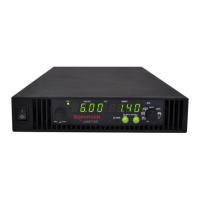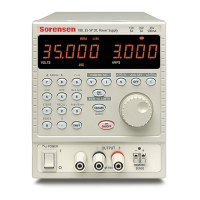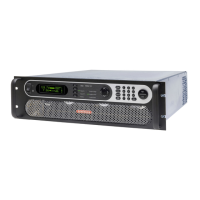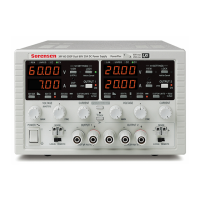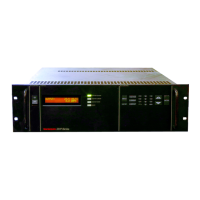DC Asterion Series Overview
M330460-01 Rev A 1-5
+/- 0.02% of rated voltage
+/- 100 PPM / degree Celsius
+/- 0.05% of rated voltage
+/- 0.05% of rated current
+/- 0.15% of rated current
+/- 100 PPM / degree Celsius
+/- 0.05% of rated current
+/- 100 PPM / degree Celsius
1.2.6 Output transient specifications
Voltage
Rise Time
(ms), Full
load
Voltage
Rise Time
(ms), No
load
Voltage
Fall Time
(ms), Full
load
Voltage
Fall Time
(ms), No
load
Voltage
Ripple/
Noise
RMS, mV
9
Voltage
Ripple/
Noise PK-
PK, mV
10
4)
maximum time, from 0-100% of programming change from zero to rated output voltage with rated resistive load.
Current rise time is same as the voltage rise time
5)
maximum time, from 0-100% of programming change from zero to rated output voltage with No load.
6)
maximum time, from 100%-0 of programming change from rated output voltage to zero with rated resistive load.
Current fall time is same as the voltage fall time
7)
maximum time, from 100%-0 of programming change from rated output voltage to zero with No load
8)
Typical time to recover within 0.75% of rated output voltage for load step change of 90% of rated output current
9)
RMS ripple/noise, over 20 Hz to 300 kHz bandwidth, is measured directly across the output terminals with the
supply operating at full load and nominal AC input line voltage.
10)
PK-PK ripple/noise, over 20 Hz to 20 MHz bandwidth with the supply operating at full load and nominal AC line
voltage.
Voltage accuracy/regulation specifications apply at the point where the remote sense leads are
connected.
5%, maximum of rated output voltage per line for models, for 40V to 60V
a larger amount of line drop is allowed, but output voltage regulation specifications no longer apply.
Line Drop
Effect on
Output
Rated output voltage applies at the rear panel output terminals, and line drop voltage subtracts from
the voltage available at the load terminals
CAUTION!
Due to Line Drop Compensation, if Remote Sense is disconnected from unit while the output
is enabled, output voltage will rise a maximum of 10% of model’s maximum rated voltage,
before faulting.

